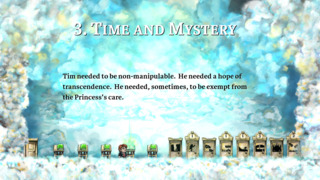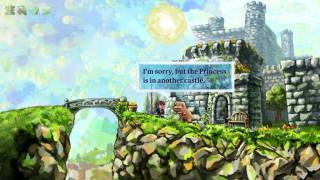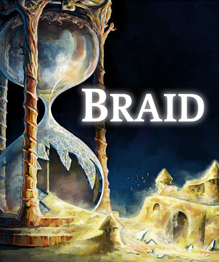A highly creative platformer that does a lot with time travel.
In recent years, people have been debating whether or not games are art. Although some examples are older games ( Panzer Dragoon, Earthbound, Out of This World, etc.), most gamers cite modern games made after 2000. One of the most common examples is Braid, an independently developed platformer released in 2008. Part of the reason is its striking watercolor art style and calming soundtrack; a larger reason is its imaginative and satisfying use of time mechanics, blending adventure games and platformers into one excellent product.
Of course, given its significant focus on art, Braid invests a lot of time in its story. Unfortunately, it does not show very well, since the basis for the entire story is “rescue the princess.” This is not an exaggeration; looking only at the events in the story, the majority of it is about Tim, the protagonist, trying to rescue his princess. Fortunately, though, what Braid lacks in plot events, it more than makes up for in themes and characterization. Each world begins with a series of books which detail the complex nature of Tim’s relationship with the princess, from how they spent their time together to possible reasons why he was separated from his princess in the first place. The exact details of their tryst are often complex to the point of confusion; at times, it is even hard to tell if the princess is a literal one or some type of vague idea, and the narration does not make it clear what is intended and what the player is simply imagining. It does not help that most of the story is told through dense tomes that, again, do not heavily focus on the plot.

While that would suggest that Braid has a series of consistent gameplay mechanics, in actuality, the game introduces new concepts so frequently that there are not many constants from level to level. The only constant is your control over time, something the game fully fleshes out. Powers include rewinding time, creating shadow clones that perform your previous actions (although this is one of the game’s most well-known powers, it appears oddly late in the game), slowing down time, and many other powers. The only thing that seems to be missing is the ability to carry earned powers into previous levels. In fact, acquisition of powers flows in only one direction, eliminating the potential for non-linear progression or multiple puzzle solutions. Even though this sounds limiting, Braid actually manages to use these in incredibly creative, challenging ways from level to level, never repeating itself. Even when the game repeats level formats almost verbatim, it uses a new power, making the level feel unique when compared to its previous iteration. Unfortunately, one of the reasons that Braid manages to be so inventive is because of how short it is. It is only six worlds long, and because 100% completion is required to beat the game, there is not much replay value to be found; in fact, the only achievement that you possibly will not get simply by beating the game requires you to beat the game within a certain amount of time. However, the game’s innovative and fun use of time manipulation will most likely balance out the short length that accompanies it.

Whether or not it should be taken seriously, however, does not matter as much as it appears. In fact, Braid’s status as a piece of art is slightly irrelevant to its quality, as it is an incredibly good game, artistic elements aside. This is not to say that the game’s art style is unimportant; they also contribute to the game’s unique, memorable nature. Appropriately, the final level of Braid best sums up the very essence of the game: although confusing and somewhat frustrating, at times, it is a highly creative and enjoyable platformer that does a lot with what little it has and is worth checking out.
